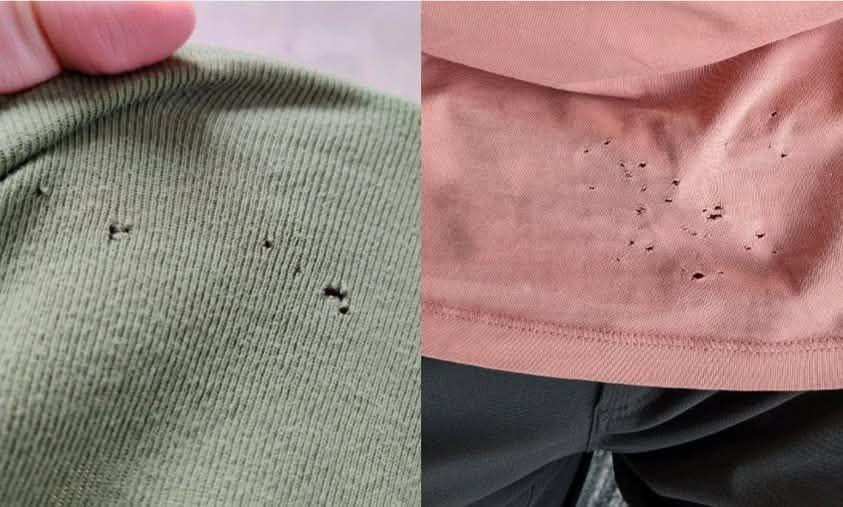ADVERTISEMENT
### **4. Pests and Insects: The Silent Destroyers**
One factor that many people overlook when it comes to holes in their clothing is pests. Insects and small creatures can cause tiny holes in fabric without you even noticing. Moths and other pests are particularly known for targeting fabrics, including cotton, silk, and wool.
**Clothing Moths:**
Clothing moths are notorious for causing damage to T-shirts and other garments. Moth larvae feed on natural fibers like wool and cotton, causing tiny holes to form. These insects are often undetected until the damage is already done. The holes are typically small and irregular in shape, and they tend to appear in areas that aren’t directly exposed to sunlight or air circulation, such as in the underarm or side seams.
**Silverfish and Termites:**
Silverfish are another type of pest that can damage fabric. They are attracted to organic materials such as cotton, linen, and paper. Silverfish are more likely to damage T-shirts stored in damp or humid environments. Similarly, termites, which are more commonly associated with wood, can also infest fabric if left unchecked.
**Solution:**
To prevent pest-related damage, store T-shirts and other clothing in airtight containers or garment bags. Keep your storage areas dry and clean, and consider using natural pest repellents like cedarwood or lavender sachets to deter insects. Regularly check for signs of infestation and take steps to eliminate pests before they can cause damage.
—
### **5. Fabric Snagging from External Objects**
Your T-shirt may also develop tiny holes due to external objects that you come into contact with throughout your day. These objects could be anything from rough countertops to jagged objects that you might brush up against. These little snags can gradually weaken the fabric until tiny holes form.
**Examples of Snagging Objects:**
– Rough furniture or textured surfaces like stucco or stone walls.
– Sharp objects like keys, scissors, or even buttons from other clothes.
– Public transportation seats or backrests in vehicles.
**Solution:**
Be mindful of the environments you spend time in. Avoid leaning on rough or textured surfaces, and consider adding protective layers, such as a jacket or sweater, if you know you’ll be in contact with sharp or abrasive objects.
—
### **Conclusion:**
Tiny holes in T-shirts can be a frustrating and mysterious problem, but with the right knowledge and care, you can significantly reduce the likelihood of them appearing. Understanding the various factors that contribute to fabric damage—from washing and drying methods to everyday wear and tear—can help you make informed decisions about how to care for your T-shirts. By following the tips in this article, you can prolong the life of your favorite T-shirts, prevent unwanted holes, and keep them looking fresh and intact for as long as possible.
Remember, while fabric quality is important, how you care for and maintain your clothes plays an equally significant role in preventing damage. Taking the time to implement gentle washing practices, being mindful of external friction, and storing clothes properly will not only protect your T-shirts but will also help you save money and reduce waste over time.
